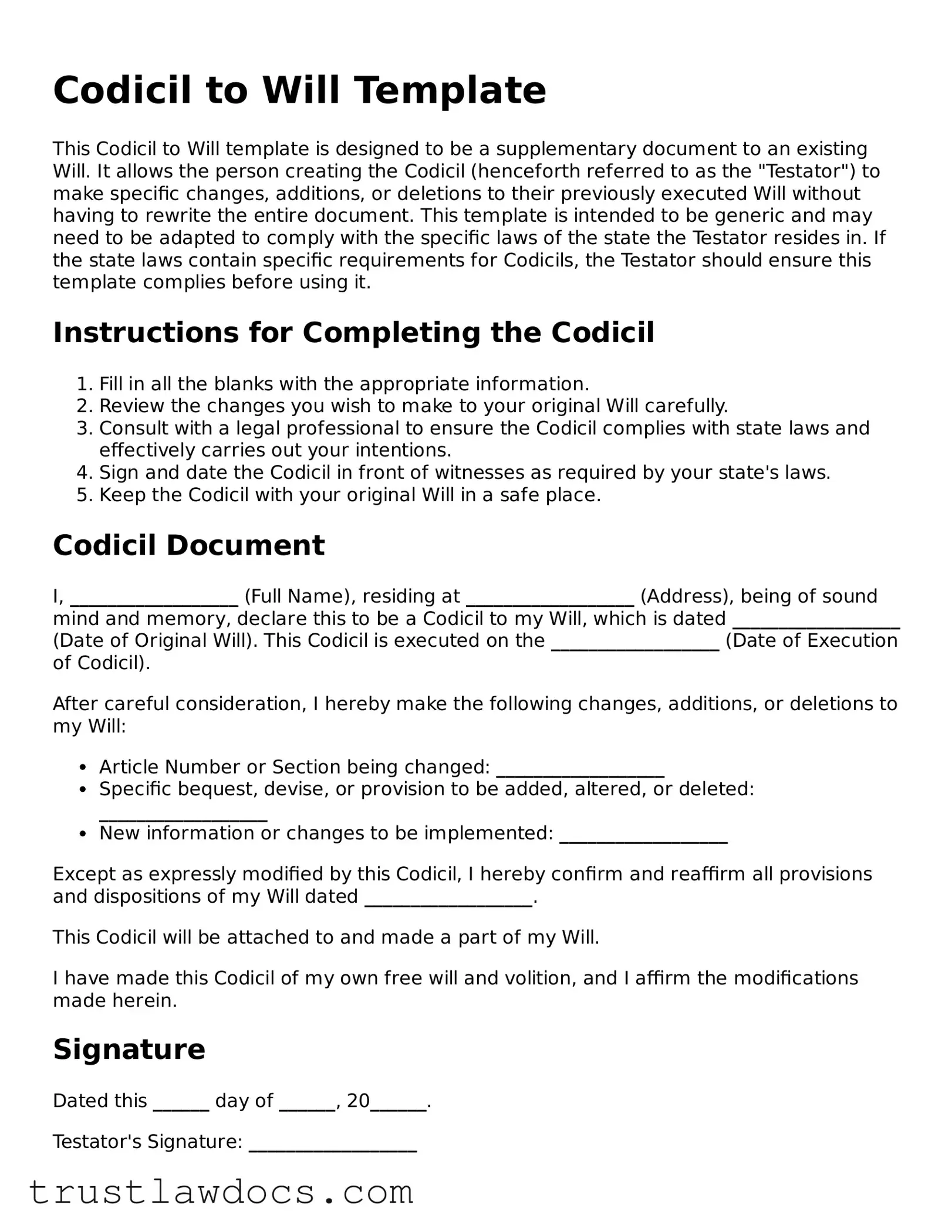What is a Codicil to a Will?
A Codicil to a Will is a document that makes changes to an existing will without replacing it entirely. It's used to add, modify, or revoke provisions in the will. This way, the person making the will can update their wishes without having to draft a new will from scratch.
When might I need a Codicil to my Will?
You might need a Codicil if you have experienced a significant life event, such as a marriage, divorce, birth of a child, or acquisition of substantial assets, that affects your estate planning. It's also useful if you wish to change an executor, trustee, guardian, or beneficiary named in your will.
How does a Codicil work?
A Codicil must reference the original will it amends, clearly stating which provisions are being altered, added, or revoked. To be legally binding, it generally must be signed and witnessed according to the same legal formalities as the original will.
Can I create a Codicil by myself?
While it's possible to draft a Codicil on your own, especially with simple changes, it's usually recommended to seek legal advice. This ensures the Codicil complies with state laws and doesn't inadvertently create conflicts within the will.
Do I need to file my Codicil with a court?
No, you do not need to file your Codicil with a court. However, it should be stored in a safe location, ideally with your original will. Informing your executor or a trusted person about its location is also wise.
What if I change my mind after creating a Codicil?
If you wish to make further changes, you can either create a new Codicil or, depending on the extent of the changes, draft a new will. It's important to review your estate planning documents regularly to ensure they reflect your current wishes.
How many Codicils can I have?
Legally, you can have multiple Codicils to a will. However, having too many can cause confusion and potentially lead to legal challenges. If you find yourself requiring significant changes, it may be simpler and clearer to draft a new will.
Can a Codicil be challenged in court?
Yes, like a will, a Codicil can be challenged in court on various grounds such as the testator's mental capacity, undue influence, or if the Codicil was not properly executed according to state law.
Is a handwritten (holographic) Codicil legal?
In some states, handwritten, or holographic, Codicils are legal as long as they meet specific requirements, such as being entirely written, dated, and signed by the testator. However, the laws vary by state, so it's crucial to understand your state's requirements.
Should I have a lawyer review my Codicil?
It's highly recommended to have a lawyer review your Codicil, especially if your will is complex or if you're making substantial changes. A lawyer can ensure that your Codicil effectively carries out your wishes and adheres to state laws.
